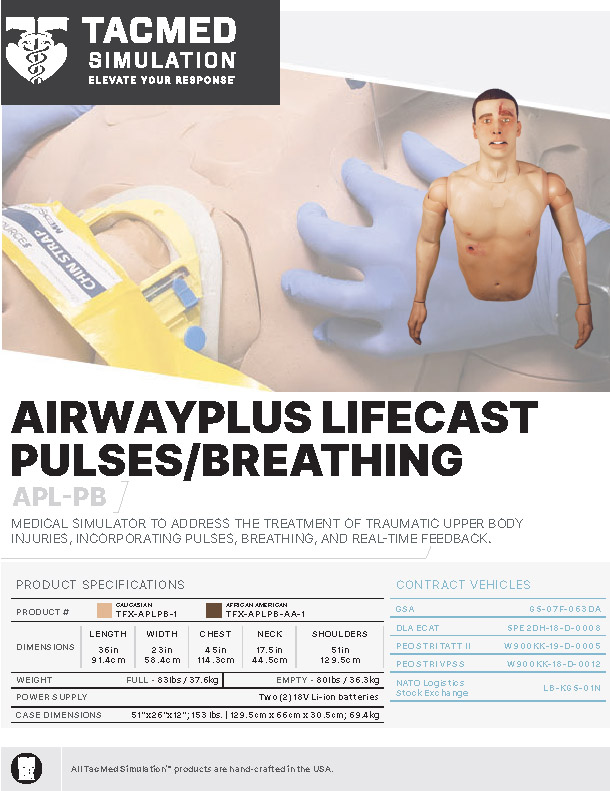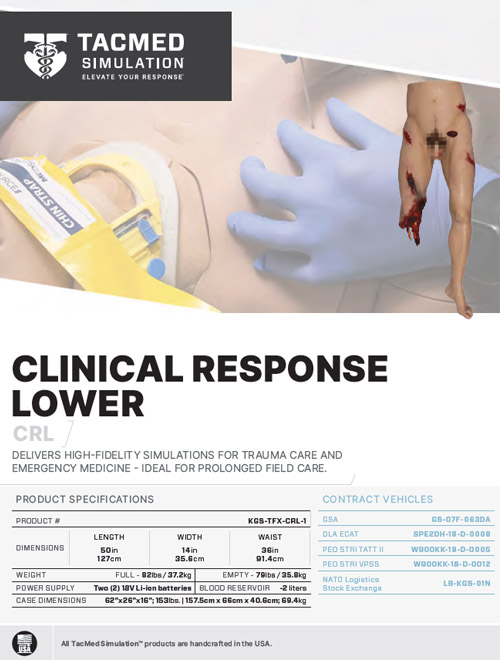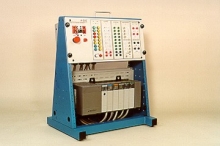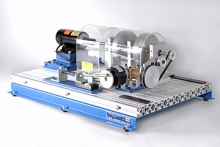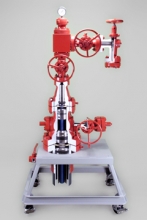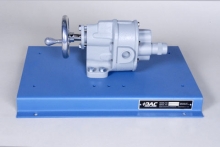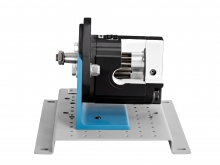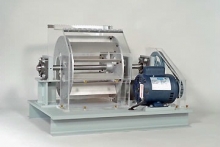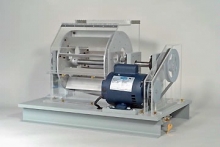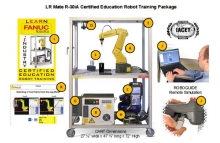The High Fidelity Upper Body Trauma Trainer, the APL-PB, is an advanced simulation tool designed for medical training. It features realistic functionalities such as active breathing with chest rise and fall, palpable radial and carotid pulses, airway management including intubation and various airway obstructions, needle decompression, tension pneumothorax simulation, IV insertion, and intraosseous (I/O) infusion. With moveable jaw, selectable airway obstruction, cricothyroidotomy, and real-time digital feedback, learners can practice various interventions crucial in emergency medical scenarios.
Key features of the APL-PB include its ability to simulate breathing and breath sounds, palpate pulses accurately, and mimic physiological responses like tension pneumothorax. The trainer's interactive design, including replaceable skin plugs and multiple-use components, enhances realism and repeatability in training exercises. The remote-controlled operation with real-time sensor data monitoring allows trainers to assess student interventions effectively, providing immediate feedback on the application of techniques such as tourniquet use, wound management, airway procedures, and more. Additionally, the modular design enables mixing and matching with other TacMed Solutions trainers to expand training capabilities further.
The TacMed Clinical Response Lower (CRL) is designed to provide unparalleled realism and durability in simulating traumatic injuries for medical training scenarios.
The CRL features a full left leg with a hemostatic wound at the inguinal crease, requiring packing with gauze and measurable pressure application. Additionally, it includes a right leg amputation at the knee with a realistic tourniquet site and popliteal artery bleed. These features, coupled with advanced sensor technology, offer trainers and learners instantaneous feedback on applied pressure, bleeding occlusion time, and blood loss volume for after-action reporting.
Key Features
- Full-motion legs with autonomous response to treatment
- Packable wound, amputation, active bleeding & occlusion response, pulses, and tourniquet
- Intraosseous infusion, intramuscular injection, Foley catheter insertion
- Real-time digital feedback, crepitus (crushed pelvic region cue), and remote control capabilities
- Water-resistant, easy to clean, and maintain
The CRL can be paired with any upper torso trainer to optimize your training experience. Download our product flyer to explore all the features in detail and enhance your medical training simulations today!
Lower body simulators are advanced training tools designed to provide realistic and comprehensive education for medical professionals. These simulators replicate the anatomy and physiological functions of the lower extremities, including muscles, bones, joints, and vascular structures. They are used extensively in medical and nursing schools to enhance the practical skills of students, allowing them to practice procedures such as injections, suturing, and emergency interventions in a controlled and safe environment. By simulating real-life scenarios, these tools help trainees build confidence and competence, reducing the likelihood of errors in actual clinical settings.
One of the key features of lower body simulators is their ability to mimic various pathologies and conditions, from fractures and dislocations to vascular diseases and soft tissue injuries. This versatility enables educators to create diverse training modules that cater to different learning needs and specialties. For instance, students can practice orthopedic procedures like setting fractures and performing joint aspirations, or they can focus on vascular access techniques such as placing catheters or performing arterial punctures. The detailed anatomical accuracy and functional realism of these simulators ensure that learners gain a thorough understanding of both normal and pathological conditions of the lower extremities.
Moreover, the use of lower body simulators supports the shift towards more hands-on, experiential learning in medical education. By integrating these simulators into their curricula, educational institutions can provide students with ample opportunities to practice and refine their skills before encountering real patients. This not only enhances the quality of training but also improves patient outcomes by ensuring that future healthcare providers are well-prepared and proficient in essential clinical procedures. The ongoing development and innovation in simulation technology continue to push the boundaries of medical training, making it possible to achieve higher levels of precision and effectiveness in education and practice.
Upper body simulators are cutting-edge educational tools that provide a realistic and detailed representation of the human upper body, encompassing the thorax, arms, and head. These simulators are integral to medical and nursing education, offering hands-on practice in various procedures such as intravenous insertions, chest compressions, airway management, and surgical interventions. By incorporating realistic anatomical features and physiological responses, upper body simulators enable students to develop essential clinical skills in a safe, controlled environment, bridging the gap between theoretical knowledge and real-world application.
A standout feature of upper body simulators is their ability to simulate various medical conditions and scenarios. For example, they can replicate respiratory distress, cardiac events, and trauma injuries, allowing learners to practice critical interventions like intubation, defibrillation, and wound management. This versatility ensures that students are well-prepared for diverse clinical situations they may encounter in their professional careers. The high-fidelity design of these simulators includes lifelike skin, accurate anatomical landmarks, and responsive feedback systems, which help students refine their techniques and decision-making skills with precision and confidence.
Integrating upper body simulators into medical training programs supports a more interactive and immersive learning experience. These simulators facilitate repetitive practice and immediate feedback, which is crucial for mastering complex procedures and improving patient care outcomes. Educational institutions utilizing upper body simulators can offer their students a robust training regimen emphasizing experiential learning, critical thinking, and hands-on proficiency. As technology advances, upper body simulators are becoming increasingly sophisticated, providing even more realistic and effective training opportunities for the next generation of healthcare professionals.
Whole body simulators from TacMed Solutions represent the pinnacle of medical training technology, providing comprehensive, lifelike platforms for practicing a wide range of medical procedures and emergency interventions. These simulators encompass the full anatomical structure of the human body, enabling learners to engage in realistic training scenarios that cover everything from basic first aid to advanced trauma care. Designed with detailed anatomical accuracy, TacMed Solutions' whole body simulators feature realistic skin, internal organs, and physiological responses, allowing trainees to develop and refine their skills in a safe and controlled environment.
One of the key advantages of whole body simulators is their ability to simulate complex, multi-system injuries and medical conditions. Trainees can practice handling scenarios such as polytrauma, cardiac arrest, and respiratory failure, gaining invaluable experience in performing coordinated, life-saving interventions. The simulators' advanced feedback systems provide real-time responses to medical actions, offering immediate, actionable insights that help users improve their techniques and decision-making processes. This immersive training experience enhances technical proficiency and builds the confidence needed to manage critical situations in real-life clinical settings effectively.
Moreover, TacMed Solutions' whole body simulators are designed to support various training environments, from classroom instruction to field exercises. Their durability and versatility make them ideal for use in various educational settings, including medical schools, nursing programs, and emergency response training. By integrating these simulators into their curricula, institutions can offer a more dynamic and interactive learning experience that emphasizes hands-on practice and critical thinking. The commitment to quality and realism in TacMed Solutions' whole body simulators ensures that learners are thoroughly prepared to deliver high-quality care and improve patient outcomes in their professional practice.
Robotic welding is revolutionizing manufacturing, and our training solutions are designed to prepare students for this cutting-edge field. Utilizing FANUC robotics, APT programming, and Fronius welding technology, our systems provide hands-on, real-world experience in automated welding processes. Students learn to program, operate, and troubleshoot robotic welders, gaining skills that are critical for modern industries such as automotive, aerospace, and fabrication.
By incorporating our Robotic Welding training solutions into your curriculum, you can help students develop the technical expertise and certifications needed to excel in Industry 4.0 environments. These comprehensive systems ensure that learners are ready to meet the growing demand for automation professionals with a strong foundation in both robotics and welding technologies.
The Smart Automation Certification Alliance (SACA) webinar, moderated by Gary Tomalin, brings together industry experts to discuss the critical role of certifications in closing the skills gap in smart manufacturing and automation. As a leader in workforce development with over 30 years of experience, Gary guides the conversation with panelists from SACA, Rockwell Automation, and Mountainland Technical College. Together, they explore how SACA is shaping the future of workforce training, with a focus on Industry 4.0 standards, reshoring of manufacturing, and creating a pipeline of skilled technicians.
Panel Overview
In this session, our expert panelists discuss the impact of SACA certifications on the workforce and how these certifications are helping to close the skills gap in smart manufacturing and automation.
- Jim Wall, Executive Director of SACA, highlights the importance of developing certification programs to meet Industry 4.0 standards. Jim’s extensive background in workforce education and certification programs makes him a leader in this space.
- Michael Cook, Director of Industry & Academia at Rockwell Automation, provides insights into how industry and academic institutions are collaborating to create a pipeline of future-ready technicians and engineers. Michael has over 20 years of experience in strategy and business development with a focus on emerging technologies and workforce development.
- Jeff Erickson, Program Coordinator at Mountainland Technical College, brings a boots-on-the-ground perspective. Jeff shares how his automation and robotics programs are using SACA certifications to provide students with the skills needed to meet growing industry demands.
Key Topics Covered
What is SACA?: Jim Wall explains the foundation of SACA, its mission to address the skills gap in Industry 4.0, and how its certifications are becoming a standard in smart manufacturing.
- Global Industrial Certification Pathways: We delve into how SACA is positioned globally and how companies like Amazon and Rockwell Automation are using SACA certifications to upskill their workforce and ensure consistency across locations.
- Industry and Academia Collaboration: Michael Cook speaks on how Rockwell Automation is working with academic institutions to develop curricula that reflect real-world industry needs.
- Certification Levels: Learn about SACA’s Silver and Gold certification pathways. These certifications, offered at no additional cost to students once a school becomes a SACA member, provide an effective way to standardize skills across industries and educational institutions.
Future of Workforce Development
Looking ahead, SACA is developing new certifications in cybersecurity, semiconductors, and electric vehicle production, ensuring that the workforce remains equipped for emerging technologies.
How to Get Involved
If you're interested in learning more about SACA or becoming a member, visit saca.org or reach out via email at support@saca.org.
Webinar 2
The Road to Certification: How to Establish a SACA Academy
The second webinar will guide you through the process of becoming a SACA Academy. Learn how industry partners helped define the certification standards, explore the range of certifications available, and discover the benefits of integrating SACA into your educational programs. Sue Smith will share insights on implementing SACA as part of an Advanced Manufacturing program, highlighting the involvement of industry in the process.
Discover how VRNA EMS is transforming emergency medical training through immersive virtual reality technology. This cutting-edge solution allows EMTs and paramedics to practice critical life-saving procedures in highly realistic, customizable scenarios. From patient assessment to trauma response, VRNA EMS delivers a hands-on learning experience that improves decision-making and boosts confidence in real-world situations. Explore the future of EMS training with VRNA and see how virtual reality is bridging the gap between theory and practice. Ready to elevate your training program? Contact us today to learn more!
The Emergency Medical Trauma Trainer (EMITT) is a versatile collection of mid-fidelity medical trainers designed to meet the specific training needs of civilian first responders. Among its offerings is the EMITT Tactical Medical Upper (TMU), a highly advanced training tool ideal for EMTs, paramedics, and first responders. The TMU features active breathing, intubation capabilities, tension pneumothorax treatment, IV insertion, and more, allowing learners to practice life-saving procedures in diverse environments. Its durable construction includes a urethane core and synthetic skin, providing realism while withstanding harsh conditions.
Key capabilities include airway management, needle decompression, intraosseous infusion, and wound care, all complemented by the ability to receive real-time feedback via a remote control system (sold separately). The trainer’s adjustable eyes simulate various trauma conditions, and its reinforced silicone arms offer full mobility. EMITT’s modular design allows for mixing and matching upper and lower body units to enhance training scenarios, making it a comprehensive tool for tactical medical simulations.
TacMed’s Whole Body Simulators (WBS) are designed to provide realistic, high-fidelity training experiences for emergency medical professionals, military personnel, and first responders. These simulators replicate human anatomy with lifelike features and functional systems, allowing trainees to practice trauma care in critical scenarios. With features like hemorrhage control, airway management, and the ability to simulate various injuries, TacMed’s simulators ensure that learners gain hands-on experience in performing life-saving procedures under pressure.
Built for durability and portability, TacMed’s WBS are ideal for both classroom environments and field training exercises. These solutions help bridge the gap between theory and practice, offering users the opportunity to refine their skills in trauma management and emergency response. Through immersive, scenario-based training, TacMed empowers medical teams to build confidence and proficiency in handling real-world medical crises.
Each WBS system consists of an upper and lower torso that disconnect for easier storage and transportation. When assembled, the simulator functions as a complete human body and can be operated by a single remote control. Injuries, bleeding, and interventions performed (or not performed) affect overall patient health and vitals.
Pages
-
Item Number:464EDAC Worldwide’s Extended PLC Trainer (464E) is a multi-use training platform allowing for instruction related to the programming and use of industrial PLCs.
-
Item Number:203EIndustrial maintenance technicians must learn to operate, maintain, troubleshoot, and repair a wide variety of mechanical systems used to manufacture products. One of the key diagnostic tools technicians will use during preventive maintenance as well as to maintain optimum efficiency is vibration analysis.
-
Item Number:295-795EDAC Worldwide’s Extended Wellhead Assembly Cutaway (295-795E) depicts the complete assembly of components used in creating a wellhead.
-
Item Number:275-135DAC Worldwide’s External Gear Pump Dissectible (275-135) is a realistic industrial pump for use in classroom and laboratory training relating to process pumps.
-
Item Number:778-110DAC Worldwide’s Hydraulic Gear Pump Cutaway, External-Type (778-110) is an industrial hydraulic gear pump that has been sectioned to reveal the inner workings of this component. This exposure allows learners to understand the design, operation, construction, and maintenance of this common process pump used throughout the industry.
-
Item Number:F190CR and F370CRIt starts with high-strength composite materials, but the Stratasys composite-ready F Series offers much more. More materials, more reliability – more capability than other similar printers.
-
The Fall Protection awareness simulation is ideal for future employees and supervisors who will work in or around construction environments. The primary goal of this course is to teach workers safe procedures when working at heights on a construction site.
-
Item Number:202-000DAC Worldwide’s Fan Balancing Trainer (202-000) is a precision assembly allowing for convenient demonstration and training in fan balancing and other vibration analysis-related topics. Based on the design of a typical squirrel cage fan, this heavy-duty aluminum device allows for assembly in a variety of configurations, creating a broad range of balancing scenarios.
-
Item Number:202-PACDAC Worldwide’s Fan Balancing Training System Plus (202-PAC) is a hands-on industrial training system that allows learners to gain experience with fan balancing to achieve maximum fan efficiency and stability.
-
A large working envelope with a reach of 717 mm, and a payload of 7 kg, combine to provide solutions for high productivity handling and assembly applications.

